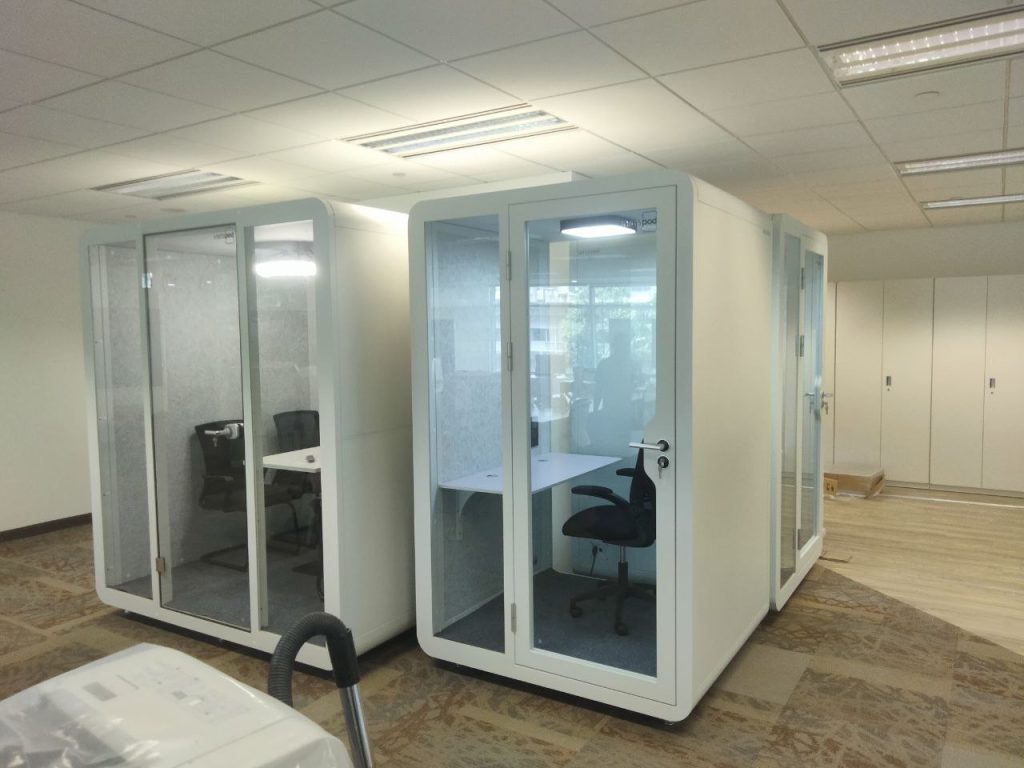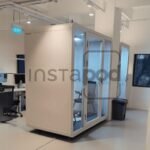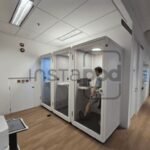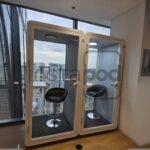No pods added to your quote request yet. Add some now for a free quote!
The Aesthetic and Functional Benefits of Office Pods
In the evolving landscape of modern workplaces, office pods have emerged as versatile solutions that blend functionality with aesthetic appeal, offering a range of benefits to both employers and employees. These self-contained units, often designed for privacy, collaboration, or focused work, have become integral to fostering productivity and enhancing the overall workplace environment.

1. Enhanced Privacy and Focus
One of the primary advantages of office pods is their ability to provide privacy in open office settings. With the rise of open floor plans aimed at promoting collaboration, concerns over noise and distractions have also increased. Office pods address these issues by offering enclosed spaces where employees can concentrate without interruptions. This privacy encourages deeper focus and concentration, leading to improved productivity levels among employees.
2. Flexibility in Design and Function
Office pods are highly customizable, catering to various needs within an organization. They come in different sizes and configurations, from small individual pods suitable for phone calls or focused work to larger units designed for team meetings or collaborative projects. This flexibility allows companies to optimize their office layouts efficiently, adapting spaces to accommodate changing work dynamics and team sizes.
3. Aesthetic Appeal and Brand Representation
Beyond their functional benefits, office pods contribute to the overall aesthetic of a workplace. Modern designs integrate seamlessly into contemporary office environments, offering sleek lines, customizable finishes, and ergonomic furnishings. This aesthetic appeal not only enhances the visual appeal of the workspace but also reflects positively on the company’s brand image, conveying a commitment to innovation and employee well-being.
4. Improved Acoustic Control
Effective acoustic management is crucial in modern office design, where noise levels can impact productivity and well-being. Office pods are equipped with sound-absorbing materials and acoustic features that mitigate noise, creating quieter spaces conducive to focused work and confidential discussions. By controlling sound levels, these pods contribute to a more comfortable and productive work environment for employees.
5. Promoting Collaboration and Teamwork
While privacy is essential, office pods are also designed to facilitate collaboration and teamwork. Larger pods can accommodate group meetings, brainstorming sessions, or informal discussions, providing dedicated spaces away from the main office floor. This separation allows teams to collaborate effectively without disrupting other colleagues, fostering a balance between privacy and teamwork within the workplace.
6. Support for Agile Working Practices
In today’s agile work environment, where flexibility and mobility are increasingly valued, office pods offer a solution that supports diverse working styles. They provide temporary workspaces for remote or visiting employees, enabling seamless integration into the office ecosystem. Additionally, pods equipped with technology interfaces support virtual meetings and remote collaborations, bridging geographical distances and enhancing connectivity across teams.
7. Wellness and Employee Satisfaction
The design of office pods also takes into account employee well-being. These spaces are often equipped with ergonomic seating, adjustable lighting, and ventilation systems that promote comfort and health. By prioritizing wellness, employers demonstrate a commitment to supporting their employees’ physical and mental health, which can contribute to higher job satisfaction and retention rates.
Conclusion
Office pods represent a modern solution to the evolving needs of workplace design, offering a balance between functionality, aesthetics, and employee well-being. From enhancing privacy and focus to promoting collaboration and supporting agile working practices, these versatile units play a pivotal role in creating productive and harmonious work environments. As companies continue to prioritize flexibility and efficiency in their office layouts, office pods are likely to remain a valuable asset, contributing to both organizational success and employee satisfaction in the years to come.
In summary, the integration of office pods into workplace design reflects a proactive strategy to meet the evolving needs of modern businesses, where enhancing concentration and productivity are essential for sustained success.
Back



